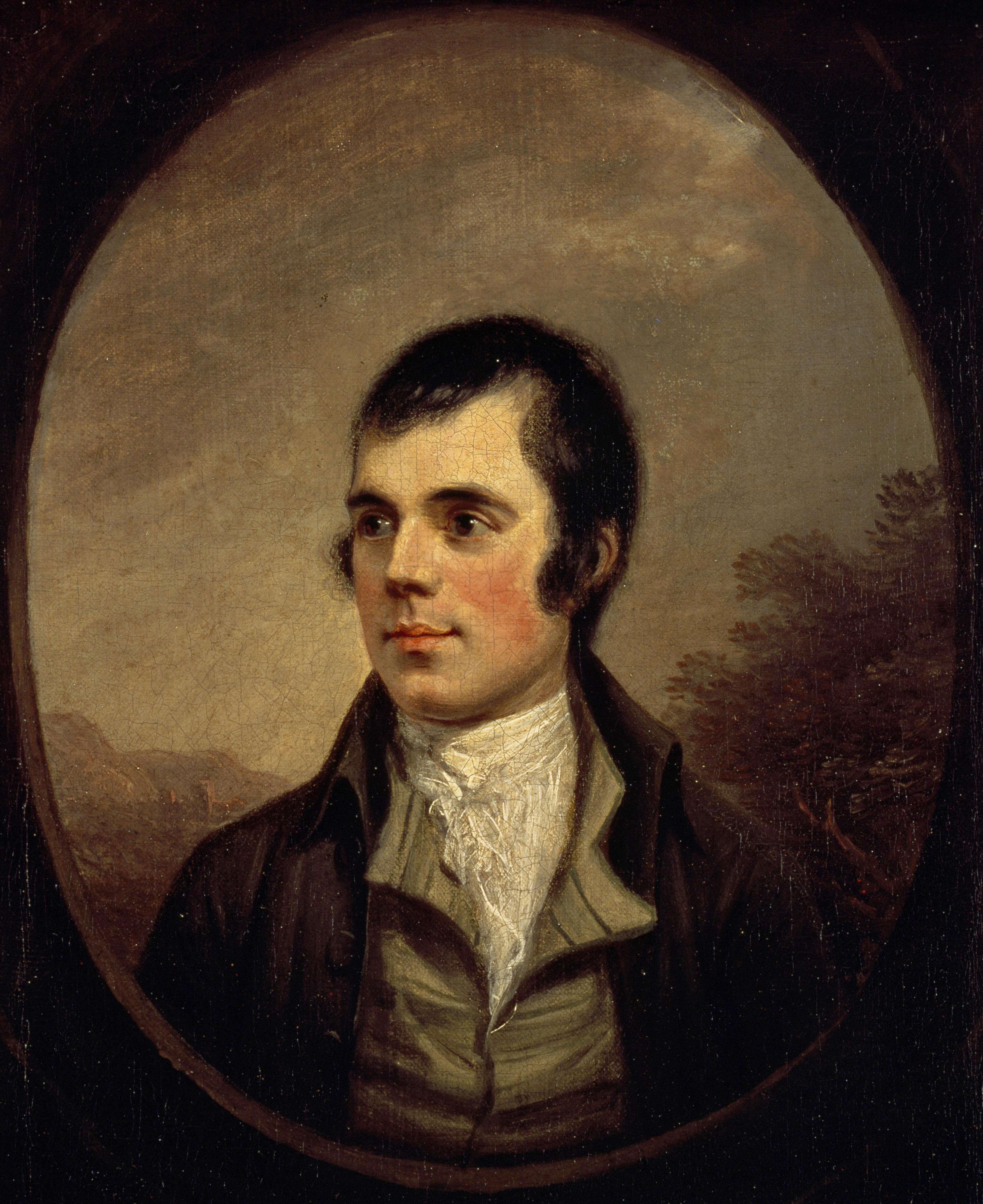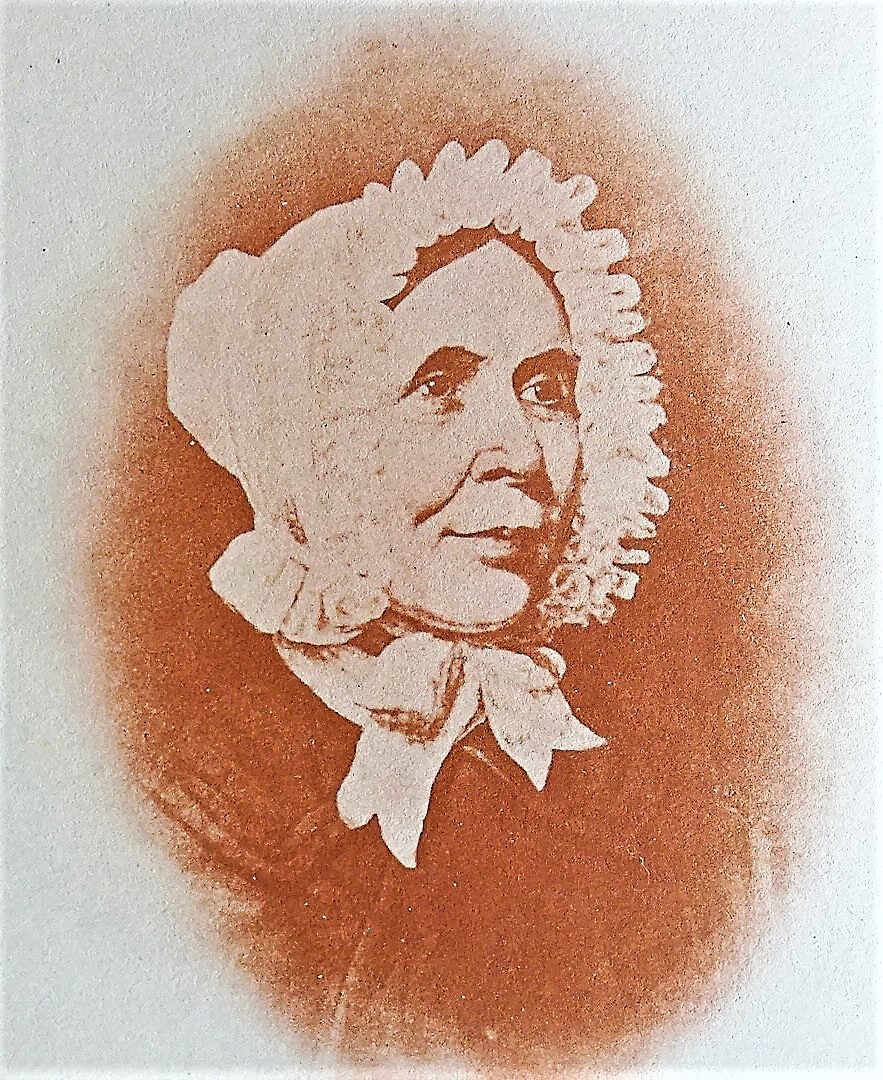|
Agnes Burns
Agnes Burns or Agnes Galt was the eldest sister of Scottish poet and lyricist Robert Burns. She was born in 1762 at the Alloway Cottage in South Ayrshire to William Burnes and Agnes Broun. She did not adopt the spelling 'Burnes'. At the advanced age of forty-two, late for the times in which she lived, she married William Galt at Dinning in 1804Purdie, p. 60Westwood, p. 13 who had worked for her brother Gilbert at Dinning Farm in Nithsdale.Westwood, p. 12 Life and character Agnes's siblings were Robert Burns (b. 25 January 1759); Gilbert (b. 28 September 1760); Annabella Burns (b. 14 November 1764); William (b. 30 July 1767); John (b. 10 July 1769); Isabella (b. 27 July 1771). Agnes Broun recalled that her husband only once took a strap to his children and that was to their daughter Agnes when she showed reluctance to pay attention to his reading lessons and that "..it had had a good effect upon the child's temper." Agnes moved in 1817 with William to the Fortescue Estates ... [...More Info...] [...Related Items...] OR: [Wikipedia] [Google] [Baidu] |
Alloway
Alloway ( gd, Allmhaigh, ) is a village in South Ayrshire, Scotland, located on the River Doon. It is best known as the birthplace of Robert Burns and the setting for his poem "Tam o' Shanter". Tobias Bachope, the mason responsible for the construction of Hopetoun House, Craigiehall, and Kinross House, also hailed from Alloway. Some historic parts of the village make up a conservation area. The village and surrounding areas were incorporated into the Royal Burgh of Ayr in 1935, and the extended village is now a suburb of Ayr. Robert Burns The birthplace of Robert Burns, known as "Burns Cottage", is located in Alloway, now adjacent to a museum containing original manuscripts of his poetry. A nineteenth century memorial to Burns, designed by Thomas Hamilton, is located at the foot of the village next to the present church. The nearby, ruined Alloway Auld Kirk and the Brig o' Doon are featured in the poem '' Tam o' Shanter'', and are presently tourist attractions. Burns's fat ... [...More Info...] [...Related Items...] OR: [Wikipedia] [Google] [Baidu] |
A Manual Of Religious Belief
The surviving manuscript of the instructional work ''A Manual of Religious Belief'' is written in the form of a theological dialogue between father and child written out in holograph by John Murdoch for William Burnes, Robert Burns's father. William had started to compose and compile the work before Robert Burns's birth and wrote the first rough draft that has not survived. This work was originally composed with a stronger Scots language content that Murdoch modified, as well as making grammatical corrections. History of the manuscript The manuscript is not bound and is made up of only six leaves, quarto size, that is 16.5cms by 21 cms. The document is devoid of a title, contents page, pagination or even a record of authorship. It is lightly tied with a piece of red thread and John Murdoch's legible and elegant handwriting is found on all the sheets except the final verso. Burns's biographer, James Currie, stated that Gilbert Burns, Robert's brother, had the manual in his p ... [...More Info...] [...Related Items...] OR: [Wikipedia] [Google] [Baidu] |
18th-century Scottish Women
The 18th century lasted from January 1, 1701 ( MDCCI) to December 31, 1800 ( MDCCC). During the 18th century, elements of Enlightenment thinking culminated in the American, French, and Haitian Revolutions. During the century, slave trading and human trafficking expanded across the shores of the Atlantic, while declining in Russia, China, and Korea. Revolutions began to challenge the legitimacy of monarchical and aristocratic power structures, including the structures and beliefs that supported slavery. The Industrial Revolution began during mid-century, leading to radical changes in human society and the environment. Western historians have occasionally defined the 18th century otherwise for the purposes of their work. For example, the "short" 18th century may be defined as 1715–1789, denoting the period of time between the death of Louis XIV of France and the start of the French Revolution, with an emphasis on directly interconnected events. To historians who expand ... [...More Info...] [...Related Items...] OR: [Wikipedia] [Google] [Baidu] |
Peggy Thompson
Margaret "Peggy" Thompson, later Margaret Neilson, was the housekeeper at Coilsfield House or Montgomery Castle in Ayrshire, Scotland. She married John Neilsen of Monyfee. The couple lived at Minnybae Farm near Kirkoswald. She was the 'charming Fillette' of Robert Burns fame and her husband was an old acquaintance of the poet. It was on 23 August 1775 that she was first seen in her garden by Burns when he was out at noon in the school's backyard measuring the altitude of the sun. Peggy in later life moved to Ayr where her children still lived in 1840. Association with Robert Burns As stated Burns first met her when he was studying at Kirkoswald school in the summer of 1775 under the schoolmaster Hugh Rodger (1726-1797). She lived with her parents, next door to the school, and Robert Burns recorded that she ''"over-set my trigonometry, and set me off in a Tangent from the sphere of my studies"''. Robert Burns met Peggy Thompson frequently at Tarboth or Tarbolton Mill and they ... [...More Info...] [...Related Items...] OR: [Wikipedia] [Google] [Baidu] |
Isabella Steven
Isabella Steven or Tibbie Stein was the daughter of a tenant farmer from Littlehill or Little Hill Farm (NS467305) that adjoined the Burns's farm at Lochlea.Boyle, Page 86 'Stein' is an alternative form of the surname 'Steven'. Littlehill had three acres of land that are said to have been little better than peat moss. She is also said to have lived in Tarbolton.'' Life and character Isabella or Tibbie was regarded as having been very good looking and at the age of seventeen Robert Burns was greatly attracted to her. The poet ''"deemed himself doing well in his courtship"'' until 'Tibbie' came into a legacy and dowry of £75 at which point she decided herself above a mere farmer's son. She married a more prosperous suitor soon after. Aged nine or ten at the time of these events, Isobel Burns, sister of the poet, is the only source of Isabella Stevens identification as being the 'Tibbie' of the song.MacKay, Page 80 A Tarbolton tradition holds that 'Tibbie' lived in the village on ... [...More Info...] [...Related Items...] OR: [Wikipedia] [Google] [Baidu] |
Anne Rankine
Anne Rankine was the youngest daughter of a tenant farmer, John Rankine from Adamhill Farm that lay two miles from the Robert Burns's family farm at Lochlea. She married John Merry, an inn-keeper in Cumnock on 29 December 1782,Mackay, Page 72 and is buried in Cumnock old churchyard. She maintained she was the 'Annie' of Robert Burns' song 'The Rigs o' Barley', however some maintain that she was merely trying to encourage business at their inn at Cumnock. Her father was brother-in-law to John Lapraik the poet.Purdie, Page 19 Life and character As stated, Anne was the daughter of a tenant farmer, a friend of Robert Burns, who is described by him as ''"rough, rude, ready-witted Rankine"''. She married an inn-keeper, John Merry, who died in 1802 and thereafter she ran the inn herself until she died in 1843, aged 84.Boyle, Page 1 Burns lodged at the inn in August 1786, four years after the song was written. [...More Info...] [...Related Items...] OR: [Wikipedia] [Google] [Baidu] |
Jessie Lewars
Jessie Lewars also known as Mrs. James Thomson,Westwood, Page 1 was the youngest daughter of John Lewars, a supervisor of excise. Following the death of her 69-year-old father in 1789, Jessie was only 11 years old, when she and her brother John moved to a house in Millhole Brae (now Burns Street) that lay opposite that of Robert Burns in Dumfries. Jessie was a close Burns family friend and when nearly at the age of eighteen helped the family by nursing Robert in the days leading up to his death and doing the domestic chores.Mackay, page 624Westwood (2008), Page 96 Life and character Jessie had a brother and also an older sister, Mary, who married William Hyslop, a Dumfries builder. As teasingly predicted by Robert Burns, Jessie married James Thomson, a lawyer or solicitor, in Dumfries on 3 June 1799. The couple had five sons and two daughters. The sons were James (1800–1820); John (1802–1834), who worked with his father; William (1805–1858), who was a captain in the mercha ... [...More Info...] [...Related Items...] OR: [Wikipedia] [Google] [Baidu] |
Nelly Kilpatrick
Nelly or Nellie Kilpatrick, Helen Kilpatrick or later Nelly Bone (1759–1820). Nelly (usually short for "Helen") was possibly Robert Burns's first love and muse as stated by Isabella Burns. Early life Nelly is usually used as a nickname for "Helen." Some authors give her birth year as 1760. Nelly may have been the daughter of John Kilpatrick,Mackay, page 52 the miller and his wife Jane Reid of Perclewan Mill near Dalrymple.Burns Encyclopedia Retrieved : 2012-02-06 She was baptised on 1 March 1759. Life and character  He sta ...
He sta ...
[...More Info...] [...Related Items...] OR: [Wikipedia] [Google] [Baidu] |
Jenny Clow
Janet, Jennie or Jenny Clow was a domestic servant to Mrs Agnes Maclehose, née Craig (1759-1841), the Clarinda to Robert Burns' Sylvander.Burns Encyclopedia Retrieved : 2012-02-26 She was the daughter of Andrew (or AlexanderWestwood, Page 138) Clow and Margaret Inglis from and was the youngest of eight children.Rootsweb Retrieved : 2012-02-26 Her mistress sent her to deliver a letter to the poet and he seduced her. [...More Info...] [...Related Items...] OR: [Wikipedia] [Google] [Baidu] |
May Cameron
May Cameron also known as Margaret, Peggy, or Meg Cameron,Burns Encyclopedia Retrieved : 2012-03-11 was a servant in Edinburgh, working at a house close to that of William Creech, Burns's Edinburgh publisher. retrieved : 2012-03-11 Life and character May Cameron was, as stated, a servant girl working in Edinburgh. After a brief relationship with she lost her job and had at first to rely upon the poet for funds. May married her cousin Mungo Forbes in September 1788. Mackay states that she was a Highlander.[...More Info...] [...Related Items...] OR: [Wikipedia] [Google] [Baidu] |
Elizabeth 'Betty' Burns
Elizabeth Burns, Elizabeth Park or Mrs John ThomsonBurns Encyclopedia Retrieved : 27 February 2012 known as Betty Burns, was born in 1791 in , Scotland. She was the illegitimate daughter of and Anna Park who was a barmaid at The Globe in Dumfries. She married John Thomson in 1808 to become Elizabeth Thomson.Purdie, p.248 Association with Robert Burns< ...
|
Alison Begbie
Alison Begbie, Ellison Begbie or Elizabeth Gebbie (1762–1823), is said to have been the daughter of a farmer, born in the parish of Galston, and at the time of her courtship by Robert Burns she is thought to have been a servant or housekeeper employed at Carnell House, then known as Cairnhill, on the River Cessnock, situated about 2 miles from Loudoun Mill. It is thought that Burns's youngest sister Isobel Burns confused her name, which was really Elizabeth Gebbie.Mackay, Page 88 Life and character Alison may have lived at Old Place, now Shawsmill Farm, the daughter of a tenant-farmer.Mackay, Page 84 Burns was living at Lochlea Farm at this time.Robert Burns Encyclopedia Retrieved : 9 February 2012 Although not a beauty, she had many charming qualities, inspired by an education somewhat beyond anything that Burns had ever encounte ... [...More Info...] [...Related Items...] OR: [Wikipedia] [Google] [Baidu] |






